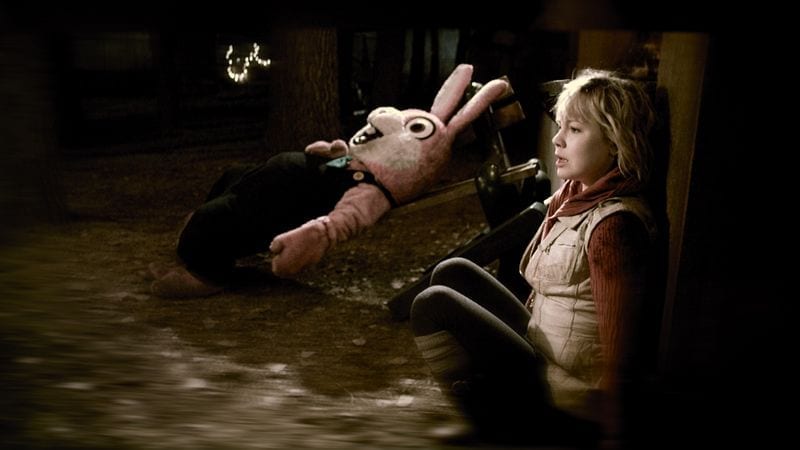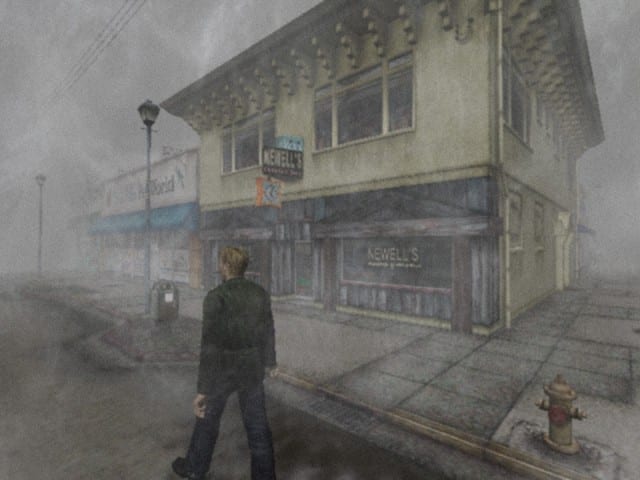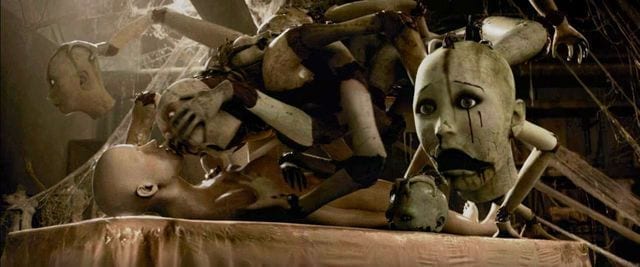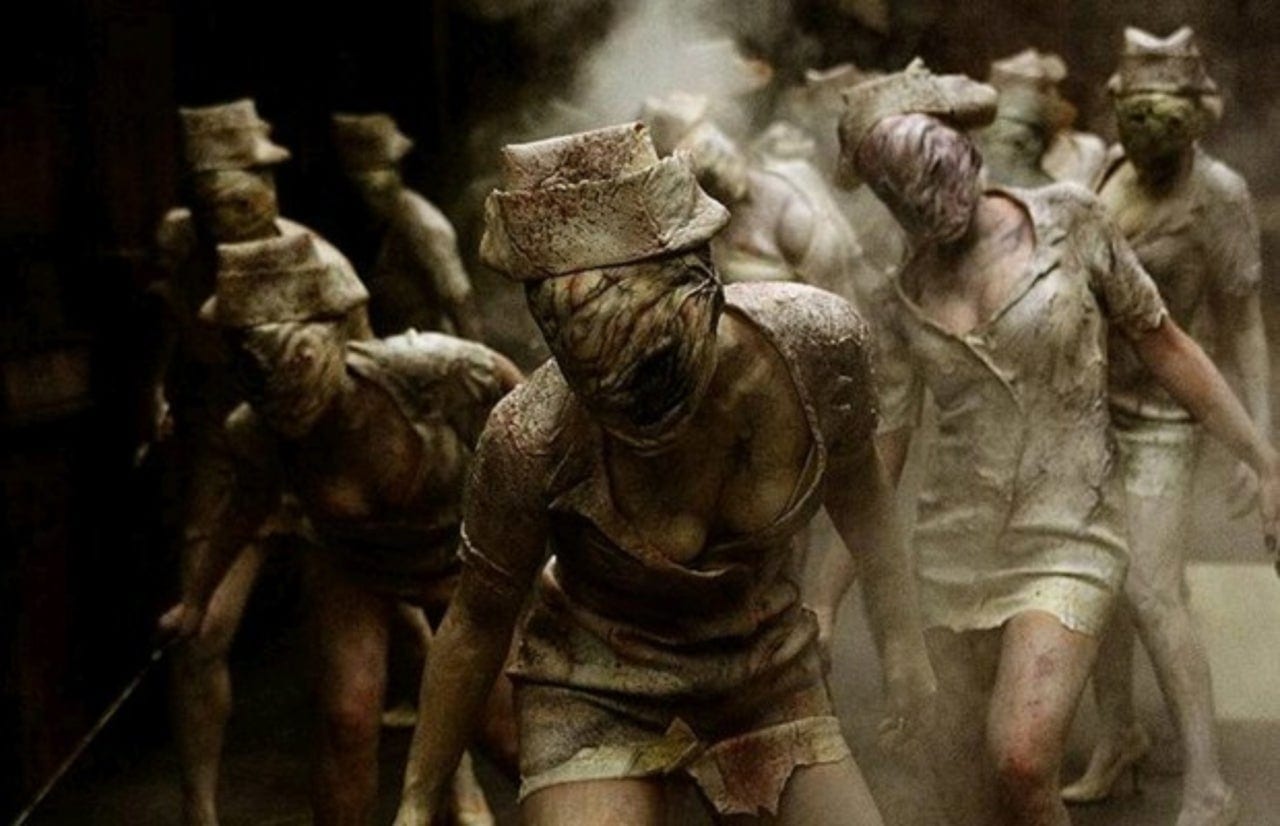*This article contains some spoilers for the Silent Hill movies, as well as some graphic images*
I probably belong to the relatively large population of people who know an awful lot about the Silent Hill franchise without actually playing much of it. I mean, I had the Silent Hill HD collection on the Xbox360, but the less said about that, the better.
Having been born in 2000, I wasn’t old enough to experience this masterpiece of psychological horror in its prime. The most iconic games- Silent Hill 2 and Silent Hill 3– were released in 2001 and 2003. Interestingly, the quality of the ones that followed are still debated to this day. Despite this though, my weird pre-pubescent brain combined with mostly unrestricted internet access meant I got to research the series in excess after seeing Pyramid Head featured in a YouTube Top 10 video.
But if there was one part of the franchise I did get to encounter first hand, it was the two movies: Silent Hill (2006) and Silent Hill: Revelation (2012).
Directed by Christophe Gans and M.J Bassett respectively, this pair of freaky films had 13-year-old me hooked. I wanted nothing more than to get my spindly little hands on them.
And when I did, I was content.
The films are ok. They’re no Black Swan or Get Out, but they’re good. Not great, but definitely good.
However, I found out a lot of people really don’t like these movies. At all. Critics, fans of the games, general movie reviewers, the lot. There’s a pretty large consensus that these films aren’t worth the time of day.
And I’m here to tell you why they’re wrong… mostly.

But first, what’s the story?
Here’s a brief overview.
Silent Hill, funnily enough, tells the story of the first Silent Hill game, released in 1999. It follows the Da Silva family, specifically mother Rose (Radha Mitchell) and her adopted daughter, Sharon (Jodelle Ferland).
Rose gets distressed when her daughter starts having strange, sleepwalking nightmares about Silent Hill, a town that was destroyed 30 years prior to the start of the film. As a means of getting closure, Rosa takes her daughter to the town, much to the chagrin of her husband, Chris (Sean Bean). On the way there, the two catch the attention of police officer Cybil Bennet (Laurie Holden), causing Rose to panic. Just before the officer can catch up to them, a girl steps out into the road, forcing the already petrified mother to swerve and crash.

When she wakes up, she and Cybil are on the iconic, fog-filled streets of Silent Hill, but Sharon is missing. Now with a common purpose, the two women fight their way through the town. Coming face-to-face with gruesome monsters, a fanatical cult known as The Brethren and piecing together its gruesome history. There’s also the sinister involvement of a little girl named Alessa.
The sequel- which for the sake of convenience I’ll just call Revelation- is an adaptation of the third game. This film revolves around a grown-up Sharon who now lives under the name Heather Mason (Adelaide Clements).
After moving to a new town, Heather finds herself haunted by hallucinations of Silent Hill. She soon learns that she is being hunted by a group called the Order. But, before she can tell her father, he is abducted. Heather then takes it upon herself to travel to Silent Hill alongside new acquaintance Vincent (Kit Harington) to rescue her dad, take down the Order and put together the pieces of her past.
So, why didn’t people like it?
Like I said in the beginning, these movies aren’t cinematic masterpieces. In a way, they were also set up to fail. Video game movies are notoriously bad, so much so that the genre is practically defined by their awfulness. If you’re curious, see the Mortal Kombat and Super Mario Brothers movies for reference.
And, just like the series’ mentioned, Silent Hill has its own mechanics and plotlines that make a film adaption uniquely complex. The gameplay is consistently made up of two things: light, futile combat and puzzle-solving, which isn’t exactly thrilling movie material. Not only that, but the games’ heavy focus on psychological storytelling and a reliance on the player to figure out plots and backstories makes for an immersive, personal gaming experience. This is obviously more difficult to convey on a big screen. The viewer is watching an actor interpret these things as opposed to mulling it over themselves.
Unfortunately, we can’t expect a big-name critic to sit down and play three different games to do a review for one movie, can we?
Either with or without knowledge of the source material, critics lambasted these films. With a laughable 31% and 10% on Rotten Tomatoes respectively and neither film scraping past a 6.5 on IMDB, its clear no one was too impressed. One BBC reviewer simply said: “Silent Hill? Nonsenseville, more like”, while other critiques described the films as “uninvolving”, “vague” and “more deadly than silent.”
Audience responses, while slightly better, also weren’t exactly overflowing with positivity. Mostly, the films have mostly been forgotten- or rather, repressed- in most of the fandom.
What’s actually good about them then?
Both Silent Hill and Revelation may not be the most accurate or compelling adaptations, but I don’t think they should be sold short just yet. Firstly, the movies get some brownie points for using the original soundtrack of the games instead of composing a new one. Instrumentals like ‘Betrayal’ and ‘Promise’ make an appearance and the credits are accompanied by the vocal stylings of Mary Elizabeth McGlynn, singer of all the games’ voice tracks.
But there is another key aspect of these films that make them worth watching, whether you’re a fan of the franchise or not: the visuals.
Aesthetics are incredibly important in any form of media. The one thing movies and video games share is that presentation is crucial for proper audience immersion. Silent Hill is a bleak place. The literal definition of a ghost town. Covered in a thick fog and populated by abandoned, derelict buildings with a muted colour palette. On the surface, this sounds incredibly dull, but it’s quite the opposite. In the games, the lack of outstanding scenery and limited visibility made for an oppressive atmosphere. Especially, when suddenly a disgusting creature shambles out of nowhere. The movies adapt this well. Their versions of Silent Hill are just as barren and unpredictable as the originals. It keeps audiences on their toes and maintaining that iconic sense of unease.

However, if there’s one thing that sets Silent Hill apart from its horror game peers it would be its monsters. The nurses, the Mannequins, the Armless Man- almost every creature from these games are well-known and beloved in a disturbing way. And let me tell you, the movies do them absolute justice.
Though the movies are riddled with poor CGI even for the time of release (Revelation in particular), all of the monsters were brought to life through practical make-up. This impressive feat makes every single scene featuring one of these quintessential creatures feel much more real and by extension, even more terrifying.
For example, in the sequel, Heather encounters a creature known as the Mannequin Monster- a huge, spideresque amalgam of doll parts unique to the film that chases her in a warehouse. This beast is made up entirely of CGI and while this certainly makes it look uncanny, it’s weird, plasticky appearance removes it from the more mundane setting.
Contrast this with the movie’s version of Pyramid Head- the series’ most recognisable creation. Played by Roberto Campanella, this hulking abomination appears in both films and still manages to preserve its domineering, terrifying presence. Despite still wielding its huge knife and having the body of an Adonis, this Pyramid Head feels real. The insanely accurate practical effects- when put alongside the other human actors- makes the creature a fully fleshed part of that world. Therefore, a more plausible threat. This makes every appearance more intimidating. Considering how brutal Pyramid Head is both in and outside of the games, it keeps viewers constantly concerned. And if that level of paranoia isn’t textbook Silent Hill, I don’t know what is.
So, let’s wrap things up.
The Silent Hill franchise is practically a horror staple at this point. Despite not releasing another game or movie in eight years (six if you count P.T), it still remains as one of the most iconic horror game series’ of all time. As a result, the films had a lot to live up to. Sadly, like most video game adaptations, it left many people disappointed.
However, I believe in giving credit where credit is due.
As I’ve said, Silent Hill is a hard game to replicate in any form that’s not the original. Nothing can compare to the deeply psychological and immersive experiences of Silent Hill 2 or 3. Not even the later games. And while these movies fall flat with their storylines and tone, they more than make up for it with the most realistic presentation of the town. It may not be an exact copy, but it feels like Silent Hill. The visuals, the atmosphere, even the rather plain costuming and actors all make it feel genuine.
And to me, that’s what’s important.
They won’t be winning any awards or become the proud subject of fan discussions, but if you need a good, clean scare this Halloween, take a trip to Silent Hill.
Words by Ly Stewart

The oppressive fog and dulled aesthetics are great! If it had tried to change its self to be more commercial it wouldn’t have been a silent hill movie.